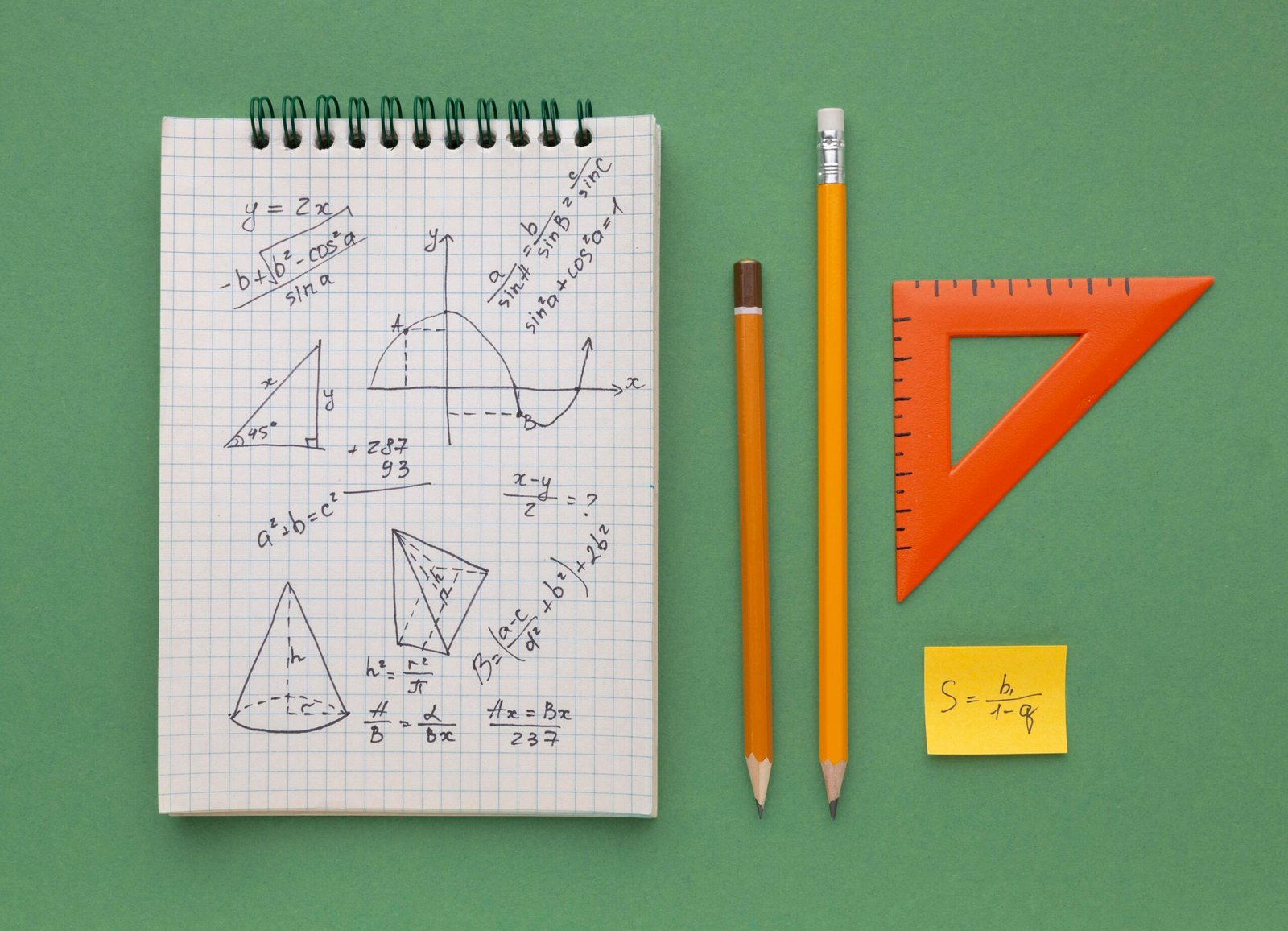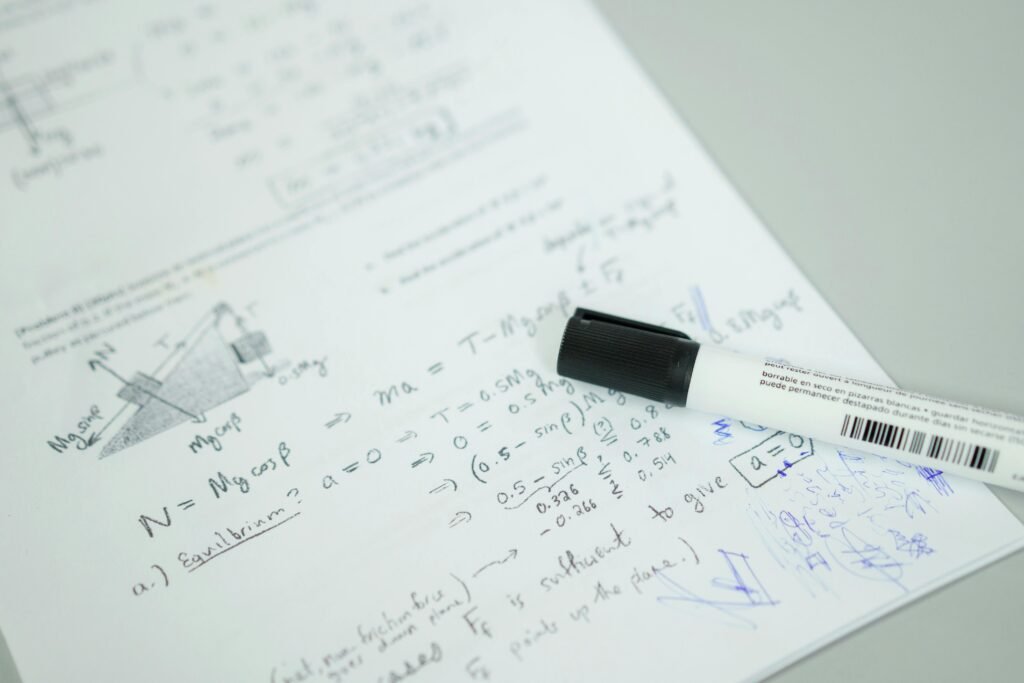Grade 10 Math: How to Master Trigonometry Before September
May 26, 2025

Trigonometry doesn’t have to feel like decoding alien languages. Sure, words like “sine,” “cosine,” and “tangent” sound alien and intimidating, but with the right methods, it will make complete sense to you, and you will understand it perfectly.
This guide breaks down trigonometry into simple steps, with practice problems and tips to help you understand the topic. Let’s dive in!
Step 1: Learn the Language (SOHCAHTOA is Your BFF)
Trigonometry revolves around right triangles and three key ratios: sine, cosine, and tangent. Remember this acronym:
SOH = Sine = Opposite / Hypotenuse
CAH = Cosine = Adjacent / Hypotenuse
TOA = Tangent = Opposite / Adjacent
Practice this problem:
A right triangle has an angle of 30°, with the opposite side measuring 4 cm. Find the hypotenuse.
Solution:
- Use sine: sin(30°) = Opposite / Hypotenuse → 0.5 = 4 / Hypotenuse
- Hypotenuse = 4 / 0.5 = 8 cm
Pro Tip: Label sides as “Opposite,” “Adjacent,” and “Hypotenuse” before plugging numbers into SOHCAHTOA.
Step 2: Conquer the Unit Circle
Trigonometry in Grade 10 often extends beyond right triangles to the unit circle, where each angle θ corresponds to a point (cos θ, sin θ) on a circle of radius 1. Start by plotting the first‑quadrant angles; 0°, 30°, 45°, 60°, 90°, and memorizing their coordinates.
Once you know the first quadrant, imagine reflecting those points into the other three quadrants like folding paper.
Also, the unit circle connects angles to coordinates (cosθ, sinθ). Memorize key angles (30°, 45°, 60°) and their sine/cosine values using these shortcuts:
- 30°-60°-90° Triangle: Sides ratio 1 : √3 : 2
- 45°-45°-90° Triangle: Sides ratio 1 : 1 : √2
Practice this problem:
Find cos(45°) and sin(60°).
Solution:
- cos(45°) = √2/2 ≈ 0.707
- sin(60°) = √3/2 ≈ 0.866
Trick: Use your hand to memorize angles! Each finger represents key angles (0°, 30°, 45°, 60°, 90°).
Step 3: Solve Real-World Problems
Trig isn’t just for triangles, it’s used in architecture, gaming, and even TikTok filters. Apply it to everyday scenarios:
Next time you’re on a ladder or eyeing a flagpole, sketch the right triangle in your mind and calculate (or estimate) the missing side. Making these real‑world connections boosts your understanding and keeps you engaged and curious.
Practice this problem:
A 6-meter ladder leans against a wall, forming a 70° angle with the ground. How high up the wall does the ladder reach?
Solution:
- Use sine: sin(70°) = Opposite / Hypotenuse → 0.94 ≈ height / 6
- Height ≈ 6 × 0.94 = 5.64 meters
Pro Tip: Struggling? Roots to Routes Academy’s summer program uses real-life examples (like measuring tree heights) to make trig stick.
Step 4: Tackle the Ambiguous Case (Law of Sines)
When you step outside right triangles, the Law of Sines (a/sin A = b/sin B = c/sin C) and Law of Cosines (c² = a² + b² – 2ab cos C) become essential tools for any triangle.
Work through examples where you’re given two angles and a side (SSA) or two sides and the included angle (SAS). Noting which formula fits each setup sharpens your problem‑solving and helps you avoid common pitfalls like the ambiguous case.
For non-right triangles, use the Law of Sines:
a/sinA = b/sinB = c/sinC. But watch out for the ambiguous case where (SSA) can have two possible solutions!
Practice this problem:
Triangle ABC has angle A = 40°, side a = 10 cm, and side b = 12 cm. Find angle B.
Solution:
- Law of Sines: 10/sin40° = 12/sinB → sinB = (12 × sin40°)/10 ≈ 0.771
- Possible angles: B ≈ 50.5° or 180° – 50.5° = 129.5°
Trick: If the side opposite the angle is shorter than the other given side, two solutions exist.
For triangles without right angles or ambiguous cases, use the Law of Cosines: c² = a² + b² − 2ab cosC
Practice this problem:
Triangle sides: a = 7 cm, b = 9 cm, angle C = 50°. Find side c.
Solution:
- c² = 7² + 9² − 2(7)(9)cos50°
- c² ≈ 49 + 81 − 126(0.643) ≈ 130 − 81.02 = 48.98
- c ≈ 7 cm
Pro Tip: Use this for SAS (side-angle-side) triangles.
Step 5: Keep a Trig “Mistake Diary”
Whenever you miss a problem, jot down the question, your error and the correct method in a small notebook. Over time, you will spot recurring slip‑ups; maybe you mixed up radians and degrees or forgot to flip the sign in quadrant III.
Reviewing these notes weekly will help you turn mistakes into learning ladders, since you’re actively reflecting on how your thinking works and preventing the same errors from coming up again.
Step 6: Practice Like a Pro
Set aside 10 to 20 minutes to practice some problems that mix right triangles, unit‑circle angles, conversions and identities. This balanced routine prevents you from getting stuck on a single topic and builds versatility.
Rotating through different types of problems also keeps your brain active: one day you can solve real‑life ladder problems, the next you can tackle sin(α+β) exercises. Over time, you’ll notice patterns and tricks emerging naturally.
Start by trying these mixed problems:
- A kite flies at a 60° angle with the ground. If the string is 50 meters long, how high is the kite?
(Hint: Use sine!) - Find angle θ if cosθ = 0.5.
(Hint: Think unit circle!)
Answers:
- Height = 50 × sin60° ≈ 43.3 meters
- θ = 60° or 300°
You can also try these.
Step 7. Cultivate a Growth‑Mindset and Stay Positive
Trigonometry can feel intimidating, but swapping the “I can’t do this” mindset for the “I can’t do this yet” mindset makes a big difference.
A growth‑mindset, celebrating effort, learning from setbacks and praising progress helps lower anxiety and keeps you motivated.
Combine this with short breaks, positive self‑talk (“I’m getting better at this”), and even group study chats where you cheer each other on. Math is as much about attitude as it is about angles.
Conclusion
By weaving these 7 steps into your summer routine, you’ll step into Grade 10 feeling more confident, curious and prepared. You’ve got this!
![]()
Related Posts
We’re So Glad You Made It Here
We know you might still have a few questions or concerns and that’s completely okay. We’re here to listen, to support, and to make sure you have all the information you need.
If something’s on your mind, don’t hesitate to reach out. Just send us a quick message, we’re happy to help.
Once you do, a member of our team will get back to you shortly and you’ll also start receiving our free, value-packed newsletters filled with tips, resources, and insights to support your child’s learning journey.


